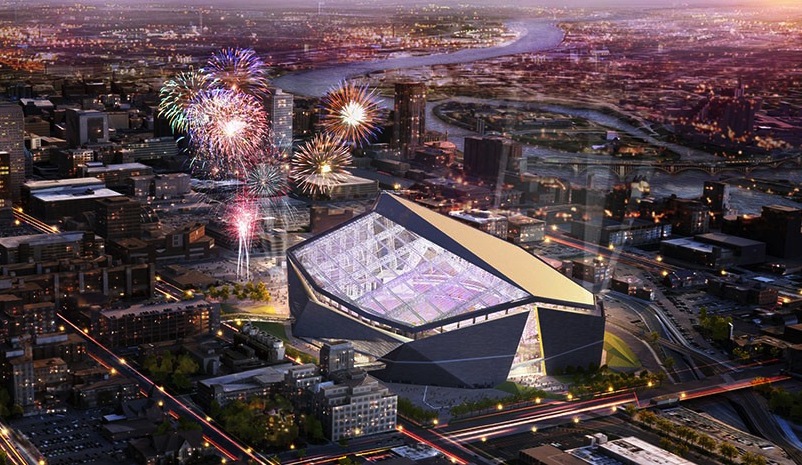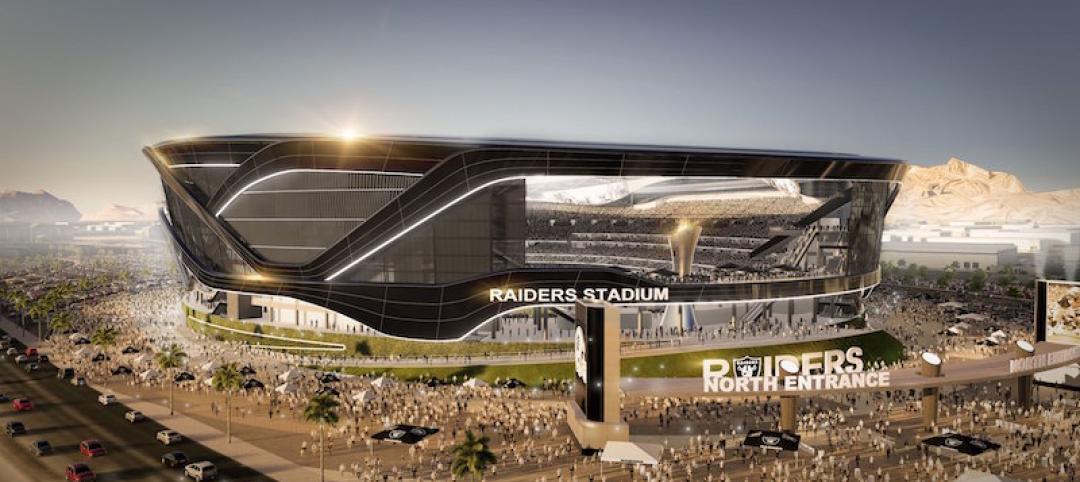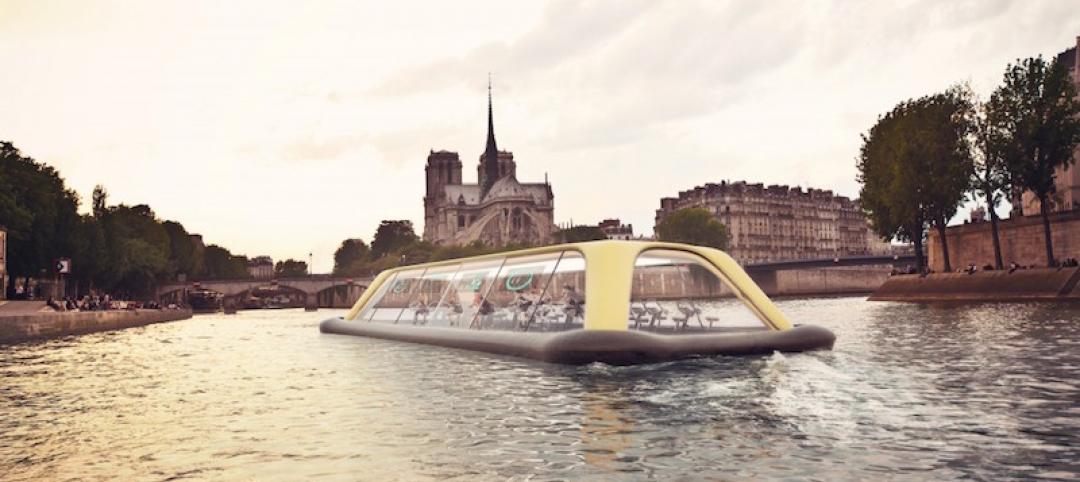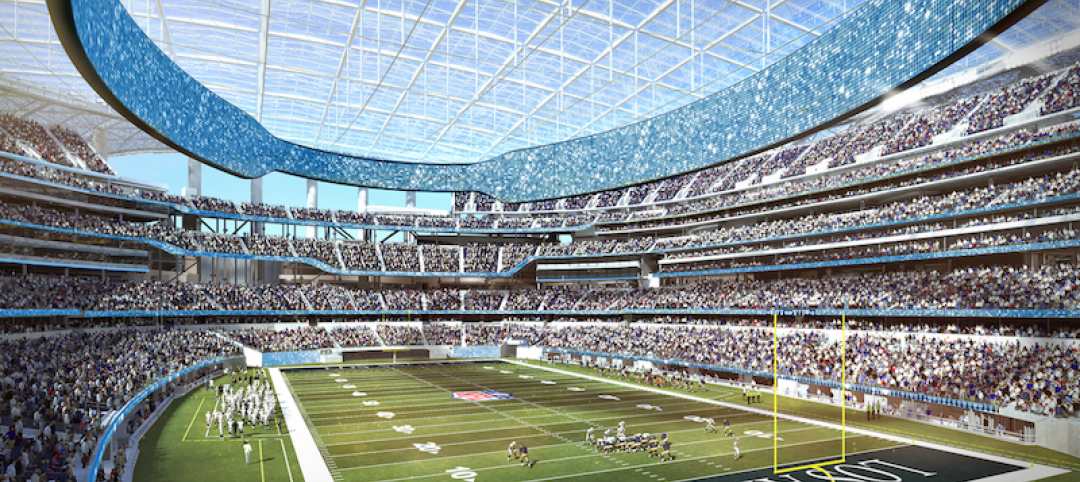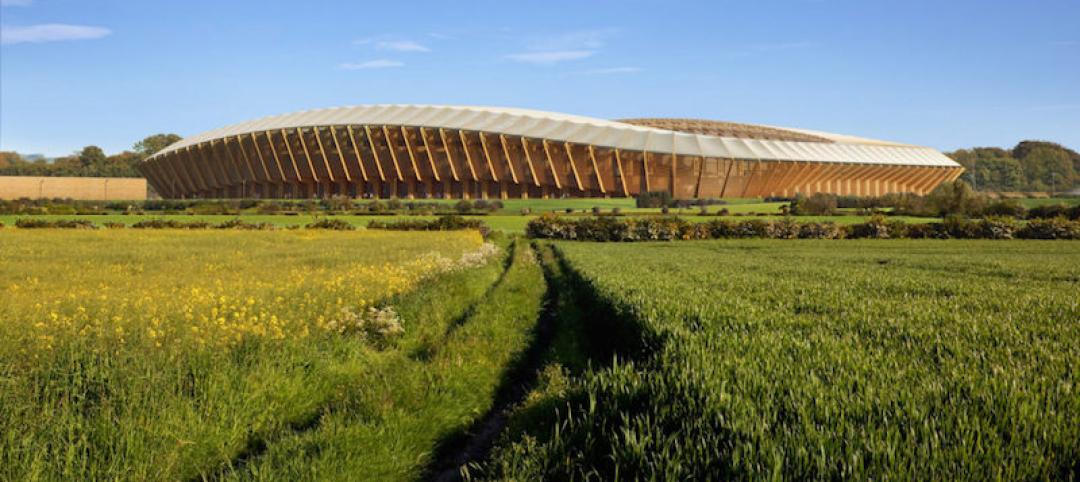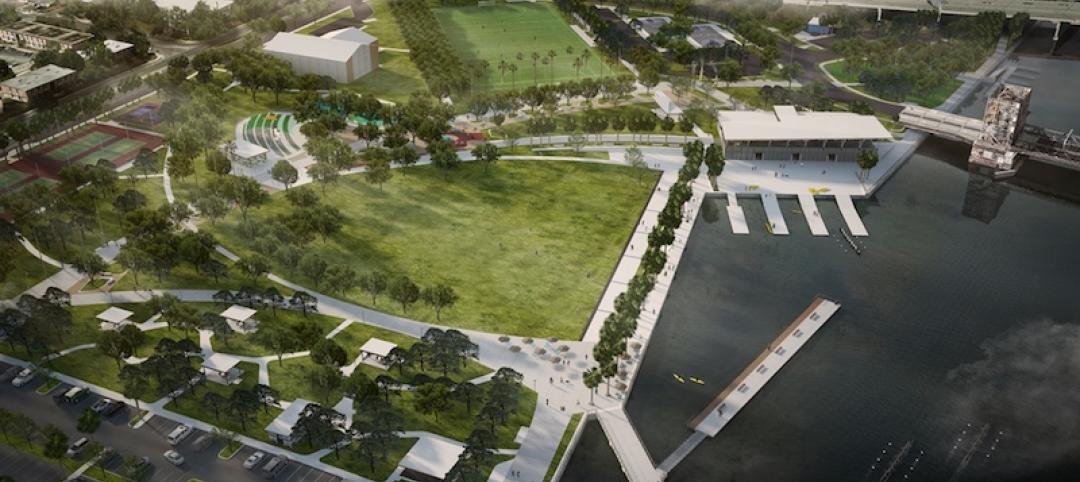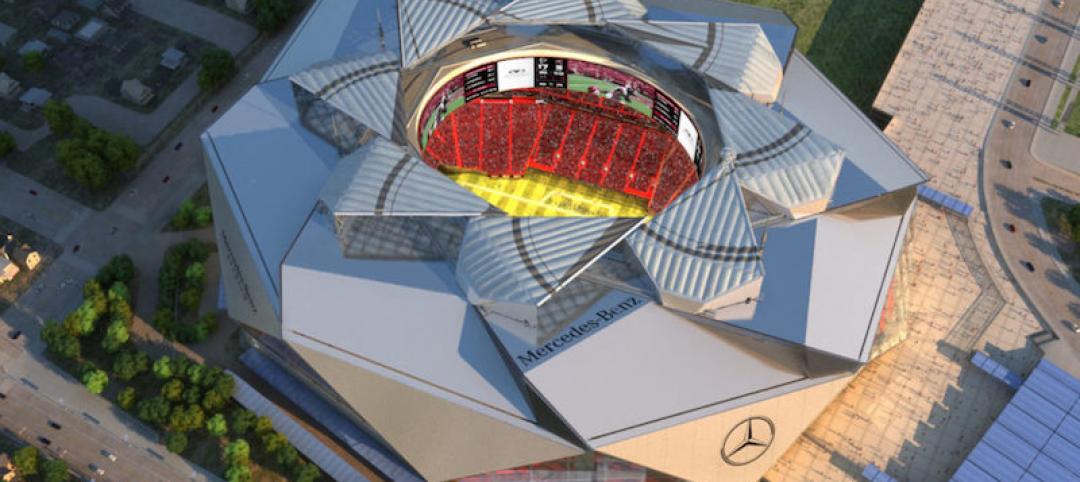The NFL’s Minnesota Vikings franchise is aware what a heavy accumulation of snow can do. Late in the 2010 season, the Twin Cities were hit by a blizzard, and 17 inches of snow came to rest on the Metrodome’s air-supported Teflon and fiberglass roof. All the weight and moisture caused the roof to puncture and collapse. The stadium was repaired the next summer for $22.7 million.
For the team’s new stadium, which was designed by HKS Architects and is set to open next fall, the team is ensuring that the roof will hold up to rough northern conditions. U.S. Bank Stadium will have an ETFE (ethylene tetrafluoroethylene) pneumatic roof, a durable, flexible material made of a polymer similar to Teflon, as the Minneapolis Star-Tribune reports. ETFE is 1/100th the weight of glass and can stretch three times its length without losing elasticity.
The ETFE pillows are still supported by air, but they are also backed by a steel structure and won’t sink due to a loss of air pressure. The panels can be punctured by sharp objects but are easy to patch, and the nonstick surface and steep angle will help prevent snow from piling high.
ETFE also is lightweight and translucent, allowing natural light to enter for a sense of openness. Domed stadiums of the past, like the Metrodome, were known for being dark and cavernous.
Roughly 248,000 sf of the roof will be composed of ETFE; the remaining portion will be a steeply-pitched hard roof, but sunlight will still angle over the entire field. According to the Vikings’ website, ETFE will not degrade when exposed to UV light. Altogether, U.S. Bank Stadium will cost just more than $1 billion to build.
ETFE has previously been installed at venues like the Beijing National Stadium in China, the Eden Project in Cornwall, U.K., and Allianz Arena in Munich.
Related Stories
Sports and Recreational Facilities | Jan 11, 2017
The Oakland Raiders could build this $1.9 billion stadium if they move to Vegas
The proposal was designed by MANICA Architecture and would seat 65,000 fans with room to expand to 72,000 for the Super Bowl.
Sustainability | Dec 14, 2016
A floating, mobile gym powered by human energy envisioned for the Seine River
Energy created by those exercising within would power the gym down the Seine.
Sports and Recreational Facilities | Dec 6, 2016
Airborne America takes flight in San Diego
The three-year-old company opens its first indoor skydiving facility featuring two wind tunnels.
Sports and Recreational Facilities | Dec 5, 2016
The Edmonton Oilers new stadium and mixed-use venue is exceeding expectations
The HOK-designed facility was created with more than just NHL games in mind, and has been nominated by Pollstar as the industry’s Best New Major Concert Venue.
Sports and Recreational Facilities | Nov 29, 2016
HKS-designed L.A. Stadium breaks ground
The stadium will be home to the L.A. Rams and will also host other world-class sporting events and college championships.
Sports and Recreational Facilities | Nov 14, 2016
Soccer stadium from Zaha Hadid Architects will be constructed almost entirely of wood
The architects say the project will be the greenest soccer stadium in the world once completed.
Sports and Recreational Facilities | Oct 13, 2016
Ice in the desert: The practice facility for the NHL expansion team in Las Vegas hopes to engage the local community
“This design is all about drawing the community into the excitement of NHL hockey,” says Arnie Martinez, AIA, Director of Architecture for Leo A Daly.
Sports and Recreational Facilities | Oct 12, 2016
A wood-clad arena is rising in Copenhagen
The design of this 377,000-sf building makes concessions to the residential community that surrounds it.
Sports and Recreational Facilities | Sep 26, 2016
Julian B. Lane Riverfront Park in Tampa to undergo Skanska-led $35.6 million reconstruction project
The park will serve as an urban oasis of outdoor activities for the surrounding area.
Sports and Recreational Facilities | Sep 26, 2016
Mercedes-Benz Stadium in Atlanta will be the NFL’s first LEED Platinum stadium
The Atlanta Falcons new home is expected to save 40% in energy usage than a typical NFL stadium.


